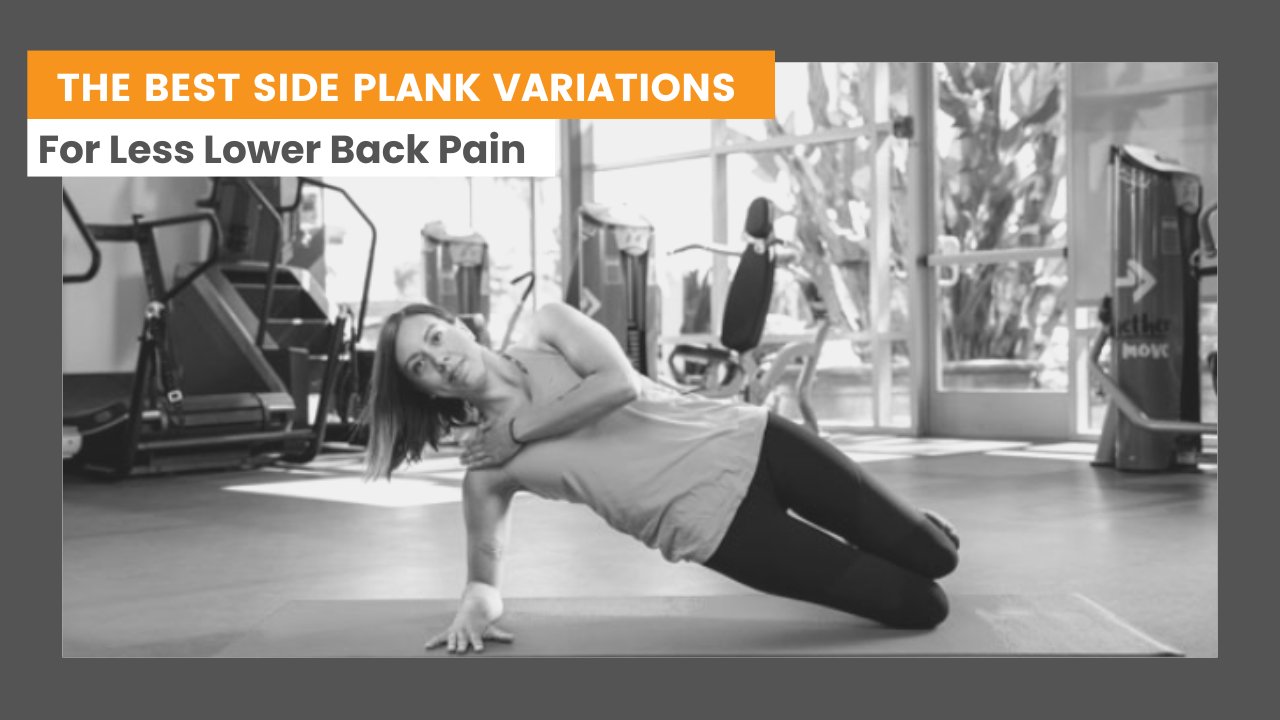The Best Side Plank Variations For Less Lower Back Pain
The side plank is one of the best exercises to strengthen important lower back stabilizers that protect your spine. In fact, the move is so important that Dr. Stuart McGill, one of the world's leaders in lower back pain treatment, includes the side plank in his 'Big 3' exercises that everyone should do. These side plank variations, listed from easiest to hardest, will help you build core strength to limit impact on your spine for less lower back pain.
How To Perform The Side Plank
Before moving on to more challenging variations it's important to build a solid understanding of the basic side plank. We'll start with the
Place your elbow on mat directly under your shoulder
Stack your knees in line with shoulder
For knee planks, keep knees bent at 90 degrees
Place opposite arm on hip or shoulder
Engage your core, ground through your right shoulder, and raise your hips so they're in line with your body
Hold. Be sure that you shoulders hips and knees stay stacked (no rotating forward or back).
Keep gaze forward and maintain a straight lin from your head to your knees
Lower hips to return to starting position
Side Plank Variations For Less Lower Back Pain
The side plank is a great exercise for all ability levels. The following side plank variations will help you build strength without aggravating lower back pain. Keep safe by finding the right starting level and slowly work your way up to more challenging variations.
Kneeling Side Plank
This side plank variation is perfect for beginners. Having both knee and foot on takes pressure off the shoulder grounded
Knee Side Plank
Next comes the knee side plank. By removing the stability the core is forced to fully engage for a greater strength challenge.
Toe Side Plank
Moving from your knees to your toes increase the core strengthening challenge. Be sure to keep hips up and not let lower leg touch the ground. Ideally feet are stacked. If uncomfortable you can place one foot in front of the other.
Side Plank Leg Lifts
While holding the side plank position, lift top leg to engage your glutes. Keep body in line and avoid lifting so high your body wants to rotate. This variations can be done on knees or toes.
Side Plank w/ Hip Sinks
Another active variation of the side plank. Further engage your obliques by dropping to floor and lifting back up. Start on knees and proress to toes.
Side Plank Reach
Target the entire oblique muscle group with the side plank reach. Maintain balance, control, and strong plank position throughout.
Side Plank Hip Thrust
A great challenge for your core and your glute med. This variation is performed in the knee plank position. Start with your hips on floor slightly behind knees and shoulders. Bring forward as you lift into side plank.
Side Plank Clamshell
Combine side planks with traditional clamshell. This dynamic exercise strengthens core and hip stabilizers that are important for limiting lower back pain. Keep movement in hips and avoid rotating the trunk.
Rotating Side Plank
Engage your entire core with alternating side planks. The key here is to maintain a strong plank position while moving from one side to the other.
Adductor Side Plank
This will be the most challenging side plank variation we'll cover. Place inside of top foot on a bench and left up. This targets your core as well as your adductor (groin) muscle group.
Learn More About Each Side Plank Variation At The Video Below:
A strong core to protect your spine from the impact of your daily life. The side plank is a safe and effective exercise that strengthens important spinal stabilizers to protect your spine for less lower back pain. By using these different side plank variations your can safely build strength without aggravating your lower back.
For the last 10 years I’ve been helping adults learn to solve chronic joint pain and maintain their lifestyle as they get older. I’ve put together a free, step-by-step program to help you get started treating your joint pain from home. Download your free copy of ‘Solving Pain With Strength’ at the link below.



